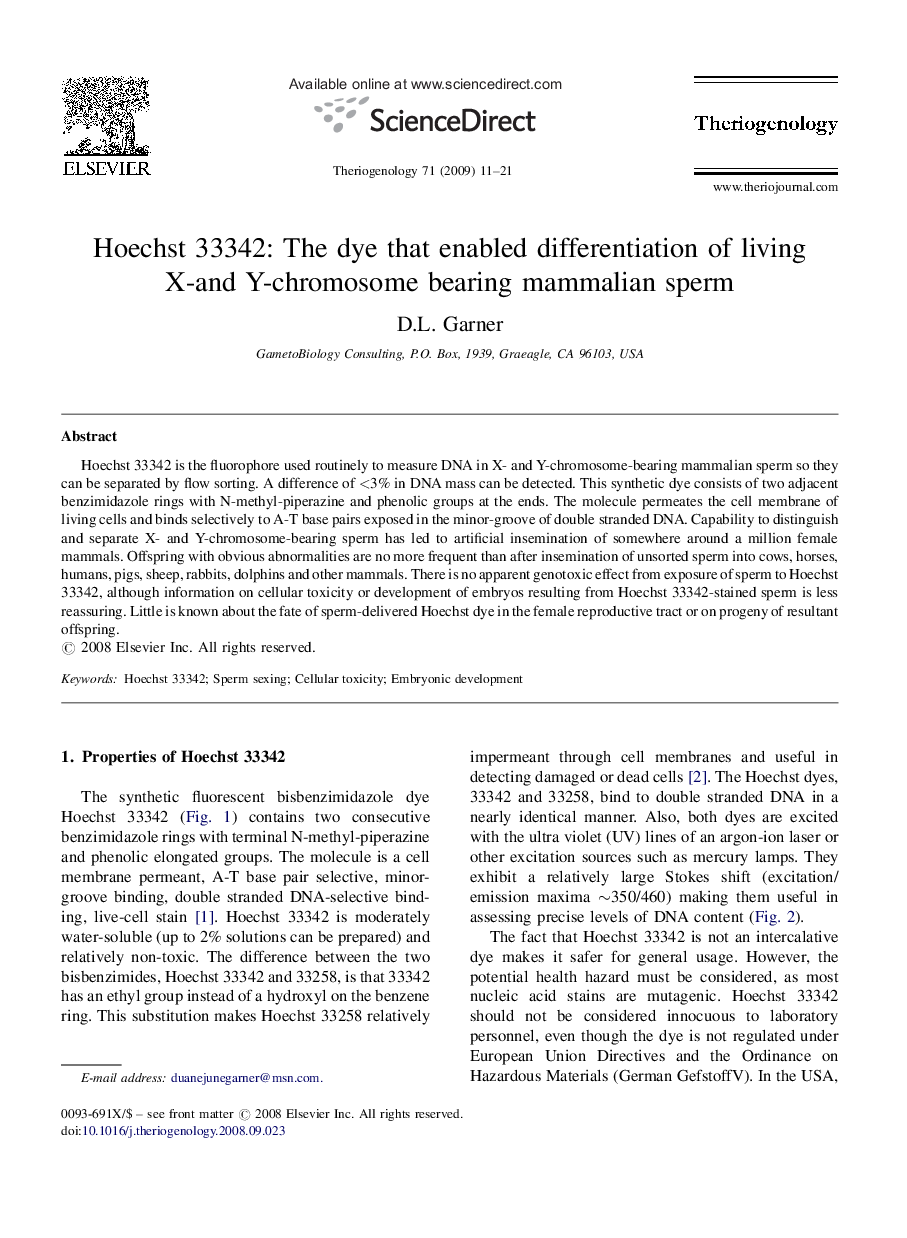| Article ID | Journal | Published Year | Pages | File Type |
|---|---|---|---|---|
| 2098105 | Theriogenology | 2009 | 11 Pages |
Hoechst 33342 is the fluorophore used routinely to measure DNA in X- and Y-chromosome-bearing mammalian sperm so they can be separated by flow sorting. A difference of <3% in DNA mass can be detected. This synthetic dye consists of two adjacent benzimidazole rings with N-methyl-piperazine and phenolic groups at the ends. The molecule permeates the cell membrane of living cells and binds selectively to A-T base pairs exposed in the minor-groove of double stranded DNA. Capability to distinguish and separate X- and Y-chromosome-bearing sperm has led to artificial insemination of somewhere around a million female mammals. Offspring with obvious abnormalities are no more frequent than after insemination of unsorted sperm into cows, horses, humans, pigs, sheep, rabbits, dolphins and other mammals. There is no apparent genotoxic effect from exposure of sperm to Hoechst 33342, although information on cellular toxicity or development of embryos resulting from Hoechst 33342-stained sperm is less reassuring. Little is known about the fate of sperm-delivered Hoechst dye in the female reproductive tract or on progeny of resultant offspring.
